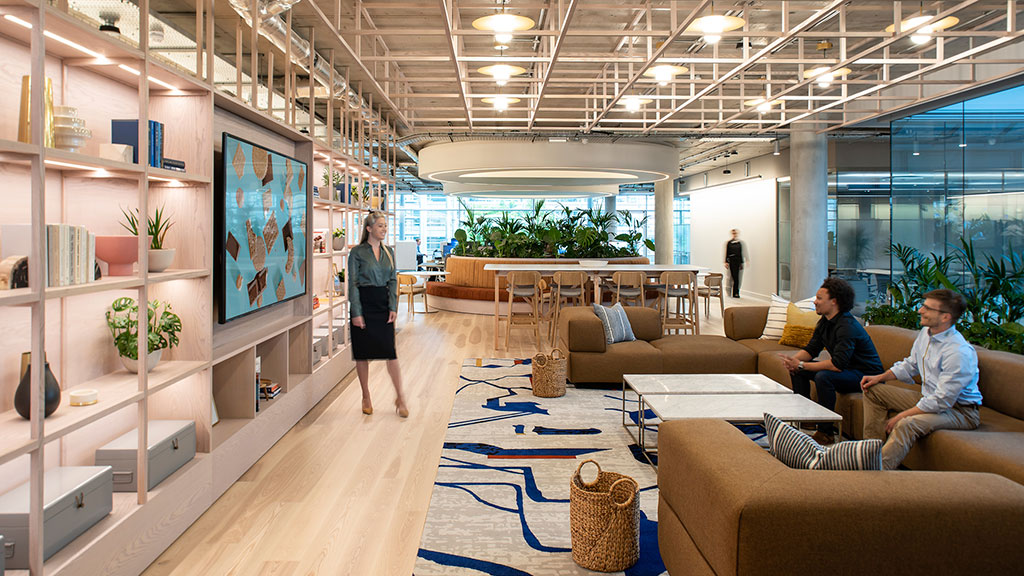High-Performing Workplaces Spark Employees’ Intrinsic Motivation
July 13, 2023 | By Naomi Sakamoto
What if a workplace could accelerate and amplify talent? What if a workplace could make employees not just produce more — but actually perform better? By tapping into employees’ intrinsic motivation, a workplace can activate their inner desire to succeed, to improve, and to be their best selves — driving powerful business results in the process.
Unlike extrinsic motivators, like compensation, title, or status, intrinsic motivation is a desire to do something because it is satisfying, interesting, or enjoyable in itself. Think about the work you’re proudest of — the work you tell your friends and partners about; the work you will talk about the day you retire. What made you devote the extra hours to get it right? What made you persevere through all the challenges? Was it the promise of a promotion? Or was there something about that work that made you feel complete?
To paraphrase psychologists Edward Deci and Richard Ryan, there are three basic pillars of intrinsic motivation: autonomy, competence, and relatedness (or belonging). These are universal and innate psychological needs that are essential for individual psychological health and well-being. Intrinsic motivators are in many cases more enduring and more effective than extrinsic motivators, correlating to higher quality of work, higher commitment, and better results over the long term.
Autonomy: The desire to feel control over where, how, and when we work
People want spaces that give them autonomy, or a sense of control over how, where, and when they work. This can include tech-enabled spaces that support work from anywhere, as well as hackable spaces that an individual or a team can physically manipulate to suit their needs. Most significantly, our 2023 UK Workplace Survey found that choice in settings and environments within the workplace is highly associated with workplace effectiveness and a great workplace experience.
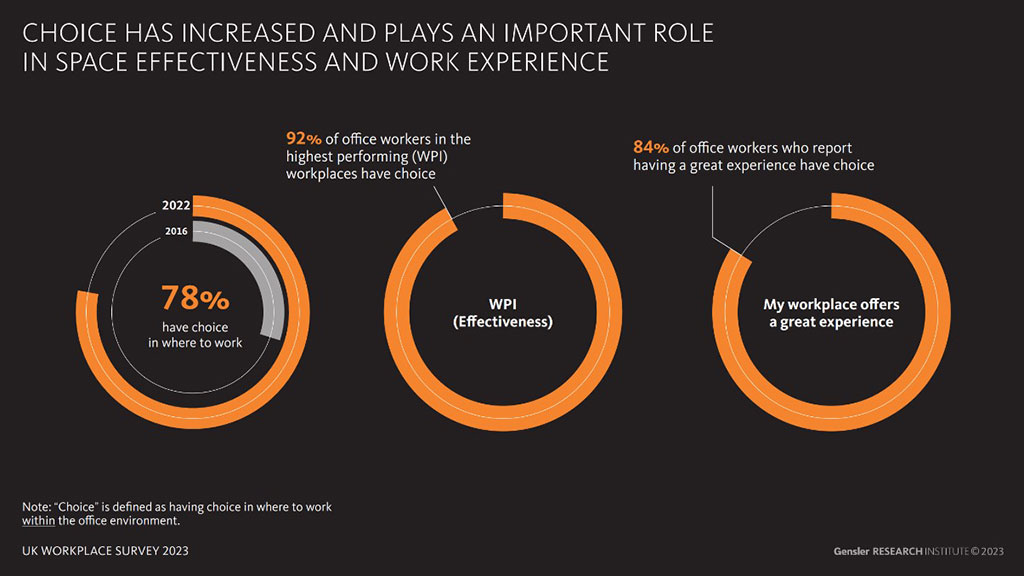
We also saw that workers need a wide range of amenities and experiences to be effective, and that if they have access to the right mix of experiences, it could dramatically increase their office presence from one additional day per week (45% of respondents) to full time (22% of respondents):
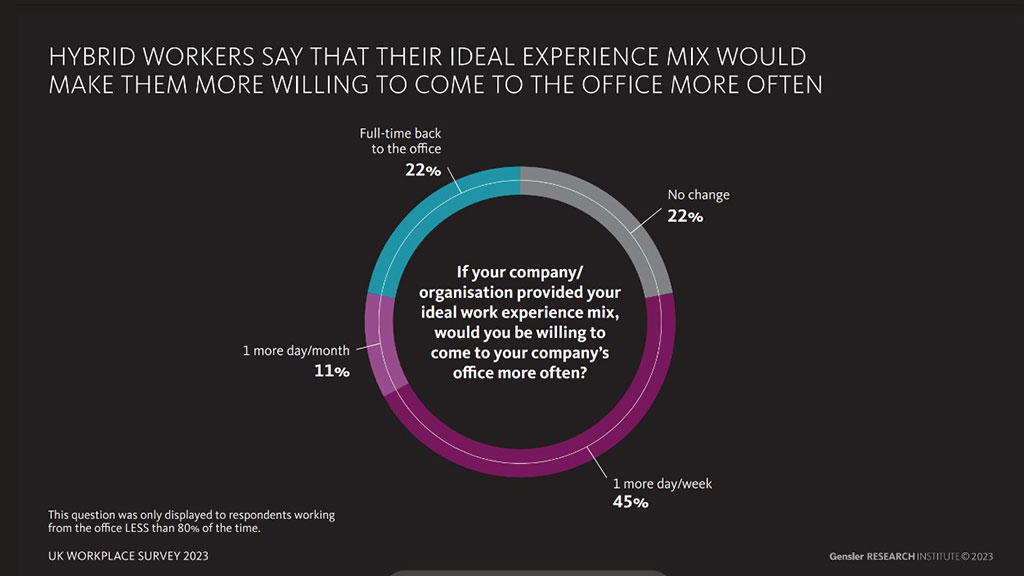
Belonging: The desire to feel connected to each other and to a larger purpose
People want to belong, to feel connected to those around them, to a larger community, or to a purpose or a shared set of values. And indeed, in our Workplace Survey we saw that in the U.K. “to sit with my team,” “socialising with colleagues,” and “to be part of the community” were among the top 10 reasons to come into the office.
Organisations can provide spaces for belonging at all scales: from casual encounters (the proverbial water cooler), to rituals, to moments like All-Hands meetings and “on-site off-sites,” where culture is forged.
Competence: The desire to feel good at what we do
People want spaces where they can feel pride in what they do; where they can develop and demonstrate mastery of their craft. These can include focus areas, technical spaces, project rooms, and scrum rooms, as well as spaces for learning, professional growth, and mentorship.
As we saw from the UK Workplace Survey, the top three reasons people go into the office all relate to delivering work effectively, either individually or as a team:

Interestingly, the most innovative companies provide both a variety of spaces within the office (autonomy), and easy access to spaces for critical work activities (competence):
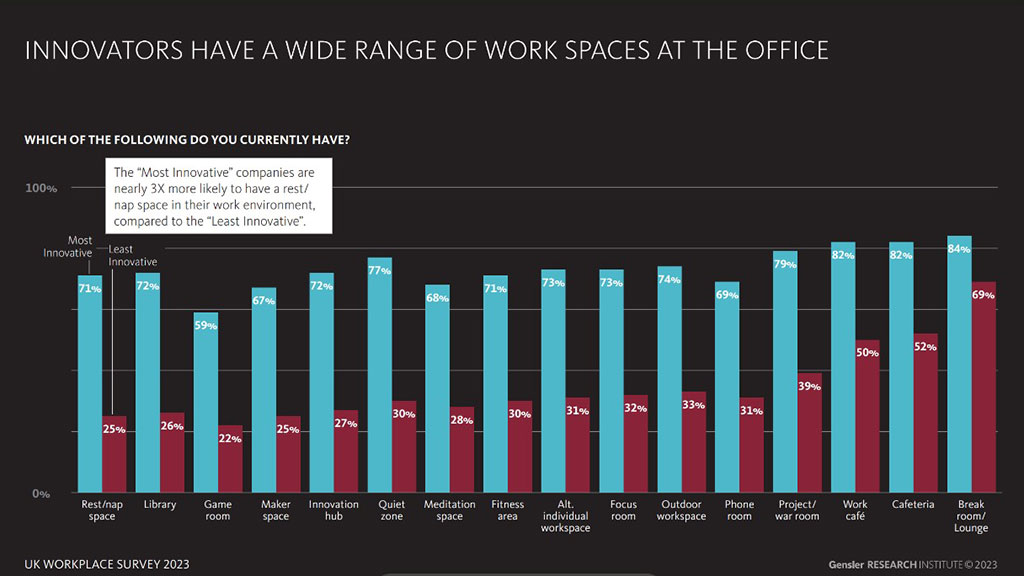
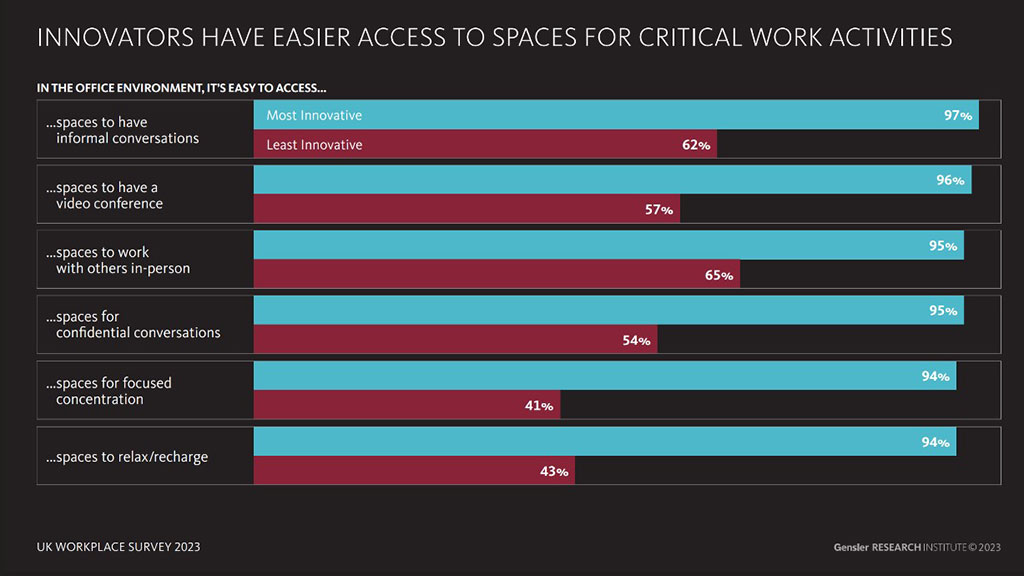
Finally, we found that high-performing workplaces positively impact individual and organisational outcomes:
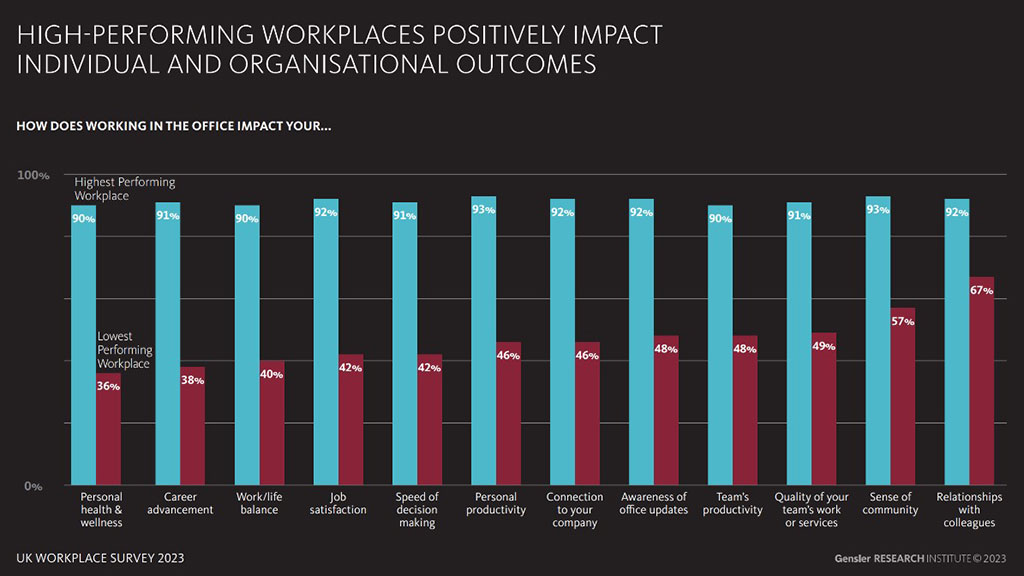
Look carefully at those categories. Just about every one of them aligns with one of the three pillars of intrinsic motivation. Perhaps we can also conclude, then, that the highest-performing workplaces are those that spark employees’ intrinsic motivation and activate their desire to do great work.
For media inquiries, email .
